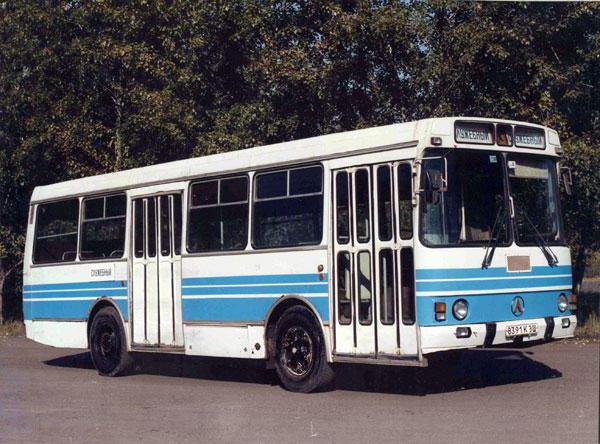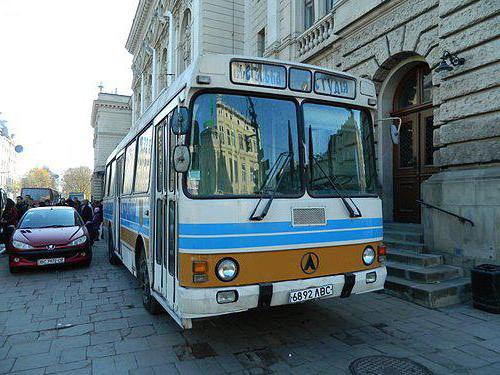
About 20 years ago on an excursion we went to"Ikarus", and more often on LAZ-695. As the name suggests, these are buses produced by the Lviv Automobile Plant. However, excursion options are far from the only transport that carried a large "L" on the hood. One of the representatives of the same Lviv plant can be called the LAZ-4202 bus, positioned as a public transport for urban and suburban communication.

It should be noted that the first machines of this linewere not ideal. That is why in most cases LAZ-42021 was used - an improved model. And although this bus has long been withdrawn from production, in some modern copies, still traces its features. Do not be him - maybe the Lvov bus would never be as comfortable for passengers or as a driver.
The beginning of the countdown of the history of the LAZ plant can be called1945 year. Even before the end of the war, in April, a decree was issued on the laying of an auto assembly plant in Lviv. A month later, construction begins. In 1949, the not yet completed factory received the first task for the production of cranes, buses and electric vehicles. Documentation for the ZIS-150 bus is transferred from Dnepropetrovsk. However, the young designers of the design bureau, at their own risk and risk, decided not to modernize someone's work, but to create their own. By the end of 1955, the public was presented with prototypes of the future LAZ-695.

Over the next few years, these machinesgain popularity. The spaciousness, unpretentiousness, simplicity in service - all this was in the new bus. From 1969 to 1973, several modifications of the 695th are being developed, but they never enter the series. For some reason, the Soviet Union is curtailing the production of buses of increased capacity, and Hungarian "Ikarus" appear on our roads.

Nevertheless, the plant is not idle.In 1979, the construction of a new large workshop is coming to an end and the development of intra-urban transport, which was given the factory name LAZ-4202, begins. This model will go off the conveyors of the plant for 5 years. In 1984, due to problems in the base version, it is replaced by a modified bus, which, like the prototype, is a machine for working on urban and suburban routes. Model 42071, as well as the 695th, was produced by the plant before the collapse of the USSR in 1991.
What are the characteristics of the busLAZ-4202? The city bus (this is how this model was positioned), in contrast to the still issued "Tourist", should carry a large number of people with comfort. And if you can argue with the second parameter, the first one, in the opinion of carriers, should meet the principle "the more, the better". The new model had 25 seats and a full capacity of 80 people. Parameters for 1979 are very good. However, it was carriers that played their part in the fact that the novelty lasted only 5 years.

Why did this model live on the assembly line sofew? The bus received a KamAZ diesel engine, "fuel-efficient", as it was called in those years. But, although it exceeded the needs of KamAZ itself, it was designed for trucks in its external parameters, and took up a lot of space in the variant of rear location (as is customary in LAZ cars). The result was a decision to move the second door to the middle of the cabin.
The next minus was the work in pair with hydromechanical checkpoint, with which the KamAZ engine did not want to work normally.
And finally, the third and main defect of LAZ-4202,which became decisive in the event of abandonment of further production, were the defects of the body. The bus could be operated up to 4 years, but the first defects appeared in 3-4 months.
Now we will examine in more detail all the parameters of the LAZ-4202 bus.

And a few words about external parameters.The bus had two double doors. Some suburban models instead of automation received a conventional swing door, due to which the number of seats was slightly changed, a third wide window between the doors appeared, and the total capacity was 95 people.
About 20 years ago to solve problemspublic transport carriers used the LAZ-42021 - the car of the Lviv plant. And although it is hopelessly outdated, in its heyday was no worse than a Hungarian bus - well known to all Ikarus.


























